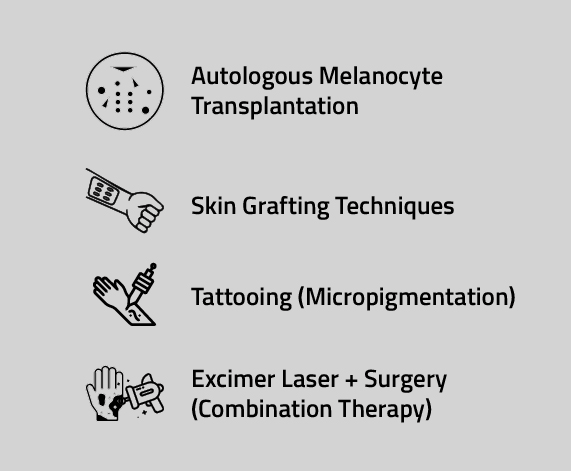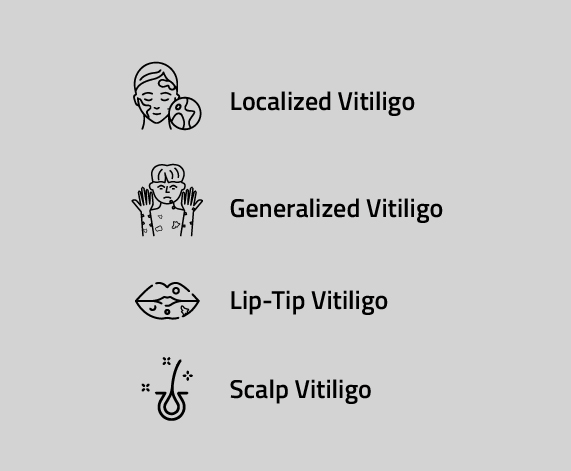Vitiligo surgery refers to various medical procedures aimed at restoring skin pigmentation in individuals with vitiligo, a chronic autoimmune skin disorder characterized by white patches due to melanocyte loss. It is typically recommended for stable vitiligo, meaning no new patches or spread for at least 6–12 months.

Types of Vitiligo Surgery
1. Autologous Melanocyte Transplantation (AMT)
- Transferring melanocytes from healthy skin to affected areas.
- Best for large and stable vitiligo patches.
- Punch Grafting: Small, round skin grafts (2-3 mm) are transferred. Best for small patches.
- Split-Thickness Skin Grafting (STSG): A thin layer of skin is removed and placed over depigmented areas. Suitable for larger vitiligo patches.
- Suction Blister Grafting: Suction is used to create blisters on pigmented skin, which are then transferred to vitiligo-affected areas. Provides a smooth, natural look with minimal scarring.
- Permanent tattoo ink is injected into depigmented areas to match the skin tone.
- Best for: Small patches, especially on lips or fingertips.
- Limitations: Can fade over time and may not match natural skin perfectly.
- Uses excimer laser or narrowband UVB therapy after surgery to stimulate melanocyte activity.
- Enhances results, especially for difficult-to-treat areas like hands and feet.
Who is a Good Candidate for Vitiligo Surgery?
- Stable vitiligo (no spread for 6–12 months)
- Limited or localized vitiligo (not widespread)
- No history of keloid or hypertrophic scarring
- Patients unresponsive to topical or light therapies
Benefits of Vitiligo Surgery

Recovery & Aftercare
Healing Time – 1–4 weeks depending on the procedure.
Wound Care – Keep grafted areas clean and avoid direct sun exposure.
Avoid Friction – No rubbing or scratching the treated area.
Follow-up Treatments – Some patients may need light therapy or topical treatments post-surgery for best results.
Understanding Vitiligo: Causes & Progression
Vitiligo (Leucoderma) is a chronic skin condition where melanocytes, the cells responsible for skin pigmentation, are either damaged or destroyed. This results in white patches that may remain constant or spread over time.
Causes & Risk Factors

Types of Vitiligo
- Localized Vitiligo: Affects specific body areas.
- Generalized Vitiligo: Spreads symmetrically across the body.
- Lip-Tip Vitiligo: Affects lips, fingertips, and toes.
- Scalp Vitiligo: May lead to white hair patches.
Progression
- Some individuals experience stable vitiligo, where patches remain unchanged for years.
- Others may have progressive vitiligo, where new patches continue to develop.

Conclusion
Vitiligo surgery offers hope for individuals seeking to restore their skin color. While the results can be long-lasting and confidence-boosting, it is essential to choose the right technique based on the individual’s condition. Consultation with a dermatologist or vitiligo specialist is crucial to determine the most suitable approach for achieving optimal results.
Connect
@
Hair O Craft
Consult Our Doctors

Let us help
Don’t let your appearance hold you back! We offer services to improve your Hair, Skin, and Dental health. From restoring thinning hair and rejuvenating your skin to lightening your skin tone and enhancing your smile, we’ve got you covered. Look and feel your best with our expert treatments!



